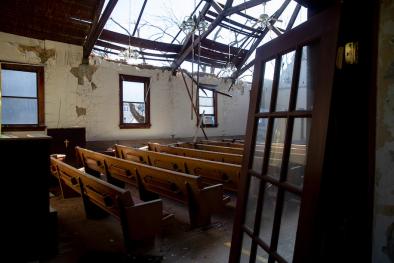Fierce ‘dragon’ storm hits Egypt with flooding rain and damaging winds. Israel braces for impact.

Climate Signals Summary: Climate change is making extreme rainfall more common because a warmer atmosphere can hold more moisture. Climate change is also increasing storm intensity in some cases.
Article Excerpt: An unusually powerful storm has slammed into the Middle East, unleashing torrential rain, destructive winds and towering walls of dust. This storm is occurring as Egypt, Israel and other nations in the region are confronted by the growing threat from the novel coronavirus.
The vigorous storm, nicknamed the “dragon” on social media, has left five dead in Egypt and is plowing toward Israel. Forecasts from Israel’s meteorological service are calling for thunderstorms with hail across much of Israel on Thursday night into Friday morning, along with windy conditions with gusts as high as 50 mph from Tel Aviv to Jerusalem and north to the border with Lebanon.
...
“This is the heaviest rain in recent memory,” wrote Sudarsan Raghavan, The Washington Post’s Cairo bureau chief, via instant message from Egypt. “The rain was so heavy that houses, including ours, are leaking lots of water from the ceilings. We have towels and buckets everywhere to catch the water. The houses in Egypt are not built to weather big rain storms.”
Flooding rains were blamed for the death of a child and five injuries in the southern province of Qena.
In other areas, high winds careening toward the ground from thunderstorms whipped up massive walls of dust:
...
The sprawling system is slamming Israel with pockets of damaging winds and flooding rains. According to the Times of Israel, the country’s meteorological service expects 60 mph or greater winds to arrive Thursday night with the strongest gusts in mountainous areas. However, some computer models anticipate wind gusts of nearly 75 mph blasting along the coast of Israel.
The high winds could lead to downed trees, power outages and even some structural damage.
Heavy rains and potential flooding is expected in Israel between Thursday night and Friday morning before conditions improve by evening.
...
Some models estimate that the intensity of the storm for this region and time of year is six standard deviations from normal — or to put it simply, exceptionally rare.
...
Contributing to this significant storm has been a dramatic dip in the subtropical jet stream. That’s helped both to intensify the surface low pressure cyclone and load it up with strong winds.
Related Content




